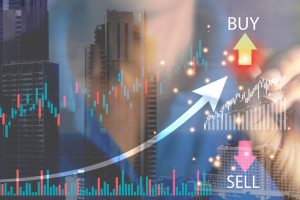
2023 was not a good year for solar stocks. As the S&P 500 gained over 25%, solar ETFs like the Invesco Solar ETF are down nearly 40%. As solar stocks to buy become cheaper and macroeconomic conditions change, they are progressively becoming better investments.
With slightly negative inflation data and economic growth in 2024 uncertain, solar stocks will likely outperform the overall market. It may finally be time to invest in solar stocks at a very cheap price. Below are the best three solar stocks to buy when prices plunge.
First Solar (FSLR)

First Solar (NASDAQ:FSLR) is one of the largest solar companies and is currently an attractive investment. It is one of the most innovative solar companies, constantly cutting costs and producing energy more efficiently. Its solar panel’s power the world, have a strong presence outside the United States and reach five continents. In addition to spending $1.5 billion on R&D for its PV technology, it also recently invested an enormous $1.1 billion to build the fifth U.S. panel factory.
First Solar’s financials also support the buy thesis. First Solar had a massive profit margin of 30.14% in the most recent quarter. While most solar companies struggle to profit, First Solar can convert a massive portion of its revenue into profit, allowing it to invest in R&D more heavily and safeguarding the company during difficult times. It also has a low P/E ratio of just 23.06 compared to the industry average of over 37, suggesting that the stock trades at a discount.
Array Technologies (ARRY)

Array Technologies (NASDAQ:ARRY) is an American energy company that provides solar tracking solutions. They are the world’s largest solar tracking company, working outside the U.S. in countries like Brazil, England, Spain, etc. The company’s value to the solar energy industry is immense, as its innovative integrated system of electric motors and its DuraTrack system maximize energy production by PV panels, increasing efficiency. Its development supports the PV panel makers by making solar energy a more attractive choice to consumers. They are constantly working on new projects, supplying solar trackers for a 750 MWDC Solar project in Ohio and announcing a second solar tracker factory in Albuquerque.
Financially, Array Technologies is performing well. They consistently make a profit, as in the past four quarters, they consistently reported profit margins of over 6%, which shows the company is self-sustaining and can fuel its own growth. Although it has more debt than cash, it still has a strong cash reserve to keep as a safeguard (over $250 million), and they are constantly paying its debt off, which is now at around $700 million from over $770 million in 2022.
Sunrun (RUN)

Sunrun (NASDAQ:RUN) is one of the biggest American companies providing home solar installation. Their primary business model relies on leasing solar panels to American homes, however they also sometimes sell solar panels. The company is increasing accessibility to solar panels, whether from effective cost-cutting or sometimes cutting energy costs of low-income families.
In a very competitive market, Sunrun differentiates itself through dedication to maintenance and customer satisfaction and unique financing options that expand its customer base.
The financials of Sunrun further support the buy thesis behind the company. Despite not being profitable yet, the company most recently reported over $500 million in revenue, which is extremely large for its valuation of just over $2 billion. The company has also steadily grown its cash reserve, nearly tripling to about $800 million in the last three years.
On the date of publication, Tomas Levani did not have (either directly or indirectly) any positions in the securities mentioned in this article. The opinions expressed in this article are those of the writer, subject to the InvestorPlace.com Publishing Guidelines.






